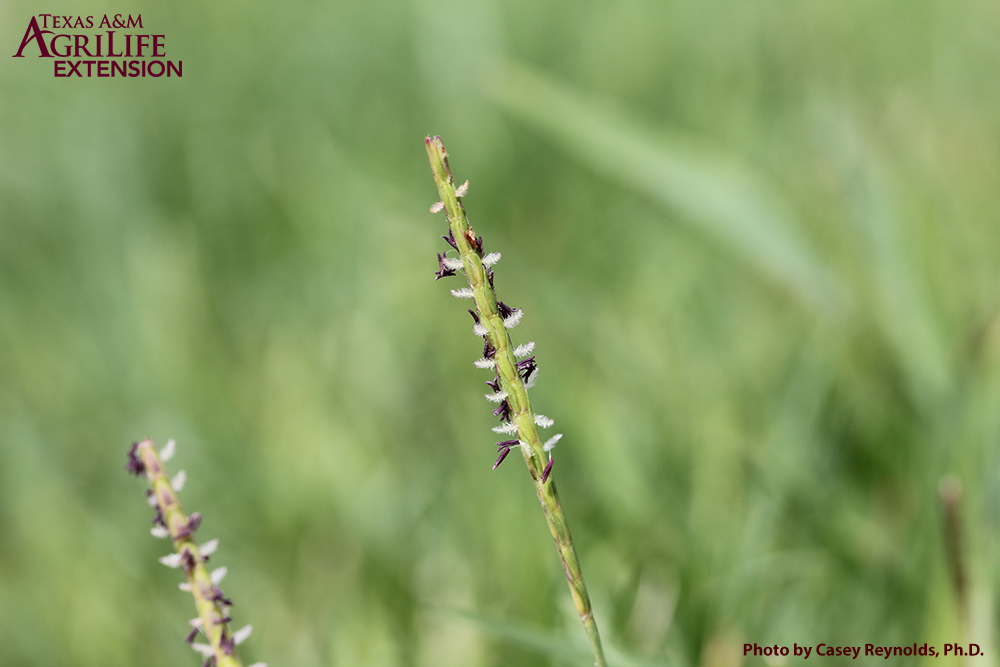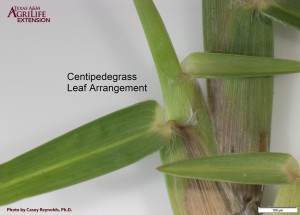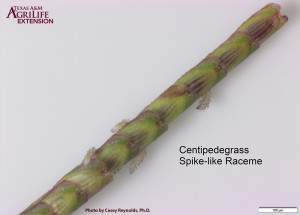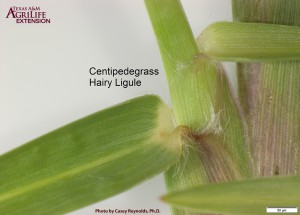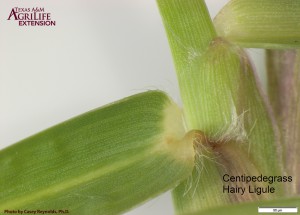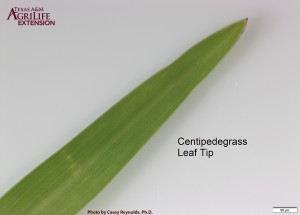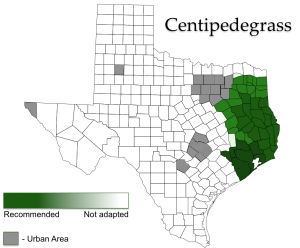
Latin Name: Eremochloa ophiuroides (Munro) Hack.
Growth Habit: Stoloniferous
Vernation: Folded
Leaf: Flat, smooth on both surfaces, tip moderately-pointed to blunt
Ligule: Membranous with short hairs
Auricles: Absent
Inflorescence: Spike-like raceme
Description: Centipedegrass is a low-input, warm-season turfgrass that spreads laterally by stolons. It typically performs best in acidic soils found in East Texas and is best known for its low maintenance requirements with regard to mowing, fertilization, and irrigation. However, it does not do well in shade or traffic and is often sensitive to many commercially available herbicides.
Strengths: Low mowing and fertilization requirement, low to moderate disease potential, and performs well in acidic soils.
Weaknesses: Cold tolerance, shade tolerance, traffic tolerance, high pH, and herbicide injury. High disease potential if over-fertilized and/or over-watered.
Recommended Mowing Height: 1.5 to 2 inches
Recommended Mowing Frequency: Weekly using a rotary mower
Fertilization Requirements: 1 to 2 lbs of N per 1,000 ft2 per year. Single application rates should range from 0.5 to 1 lb of N per 1,000 ft2 applied during the summer growing season.
| Centipedegrass Varieties Available in Texas | ||
| Variety | Latin Name | Availability |
| Common | Eremochloa ophiuroides (Munro) Hack. | Sod |
| Covington | Eremochloa ophiuroides (Munro) Hack. | Sod |
| Hammock | Eremochloa ophiuroides (Munro) Hack. | Sod |
| Santee | Eremochloa ophiuroides (Munro) Hack. | Sod |
| TifBlair | Eremochloa ophiuroides (Munro) Hack. | Seed/Sod |
